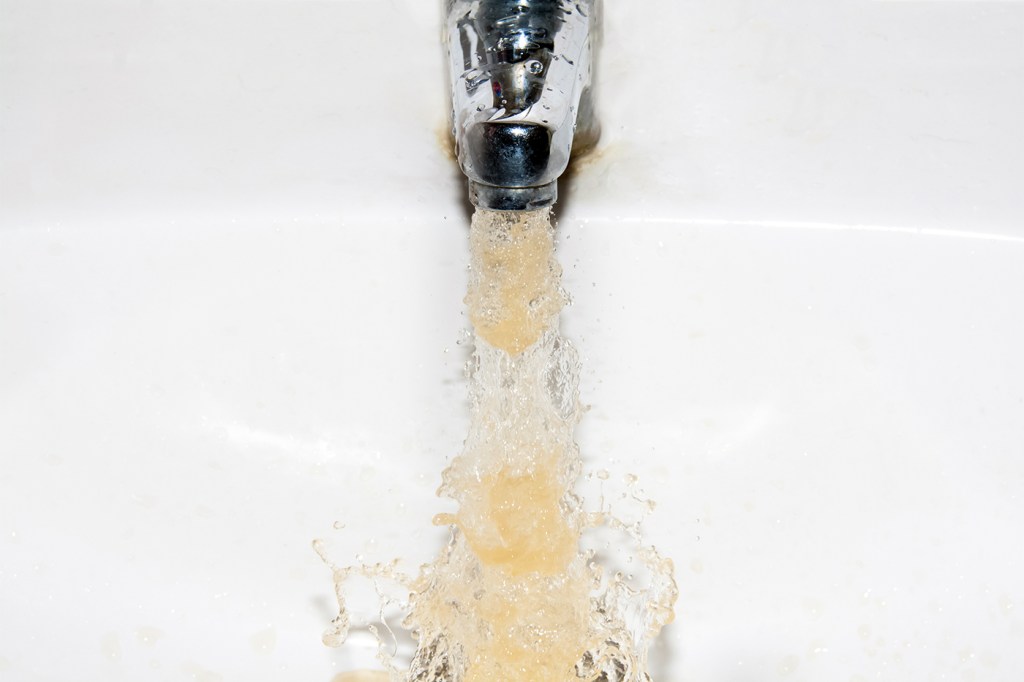Drinking water in communities of color is more likely to be contaminated by ‘forever chemicals,’ research finds

PFAS, or forever chemicals, are widespread and more likely to be found in public water systems serving low-income communities and communities of color in New Jersey, according to new research from Northeastern University.
“This really comes out of a long tradition of environmental justice research that talks about the overburdened nature for people of color and of low income,” says Phil Brown, university distinguished professor of sociology and health sciences and the director of the Social Science Environmental Health Research Institute at Northeastern.
The findings were published Wednesday in the latest issue of Environmental Health Perspectives.

PFAS (per- and polyfluoroalkyl substances) are a group of 14,000 persistent, toxic chemicals that are used in countless consumer and industrial products — everything from your waterproof hiking gear to the container for your fast-food burger. They are often called “forever chemicals” because they are extremely persistent and can build up in organisms — including humans — over time.
New Jersey was the first state to regulate certain PFAS in drinking water, with statewide sampling beginning in 2019 on all public water systems.
“This was great data because you could see the entire state, all the public drinking water systems, no matter what the size,” Brown says.
He notes that the Environmental Protection Agency has historically monitored PFAS in systems that serve 10,000 people or more. The EPA now looks at smaller systems as well, Brown adds.
Featured Posts
According to this data, from 2019-2021, PFAS were detected in 63% of New Jersey water systems, collectively serving 84% of the state’s population.
Researchers then linked the community water system boundaries to census block groups to analyze the socio demographics of the population served by drinking water where PFAS were detected.
Researchers also used New Jersey’s criteria for “overburdened communities” to focus on the environmental justice impacts of the PFAS contamination. An overburdened community in New Jersey is defined as a census block group where: at least 35% of the households are low income; or at least 40% of residents identify as minority or have a state-recognized tribal affiliation; or 40% of households have limited English proficiency.
As a result, researchers found that 92% of the Hispanic population, 94% of the Black population, and 95% of the Asian population were served by water systems where PFAS were detected at least once between 2019 and 2021. This compared to 76% of the non-Hispanic white population.
Moreover, researchers found that nearly three-quarters of community water systems serving census block groups with more than 40% people of color had PFAS detections, and one in four of these water systems had PFAS levels above New Jersey’s health-based regulatory limits. By comparison, only one in nine water systems serving block groups with less than 40% people of color had PFAS contamination above the state’s limits, researchers found.
Brown says he would like to see the study replicated in other areas to get a broader sense of PFAS contamination. The PFAS Project Lab, part of Northeastern University’s Social Science Environmental Health Research Institute, has developed publicly available datasets on PFAS contamination and governance.
“We’re always trying to share the resources that we have because we can’t do all the research in the world,” Brown says. “We also think that this is data that should be shared widely.”
But it’s not all bad news.
Researchers also found that levels of PFAS detections seemed to be declining over time, and systems that had installed water treatment technologies were less likely to detect any of the chemicals.
Furthermore, the EPA finalized drinking water regulations for six PFAS on April 10, and the Bipartisan Infrastructure Law set aside $9 billion for tackling PFAS and other contaminants. Last week, two PFAS compounds were also added to the Superfund list of hazardous chemicals, meaning that polluters will be responsible for remediation.
That being said, Brown notes that the biggest challenge is eliminating PFAS “upstream” before they contaminate drinking water.
“It’s a combination of consumer pressure on the producers and retailers, the engagement of the military (a major source of PFAS contamination) and of state and federal regulations,” Brown says. “All of these together will reduce the amount of PFAS in our society and hence in our bodies.”











